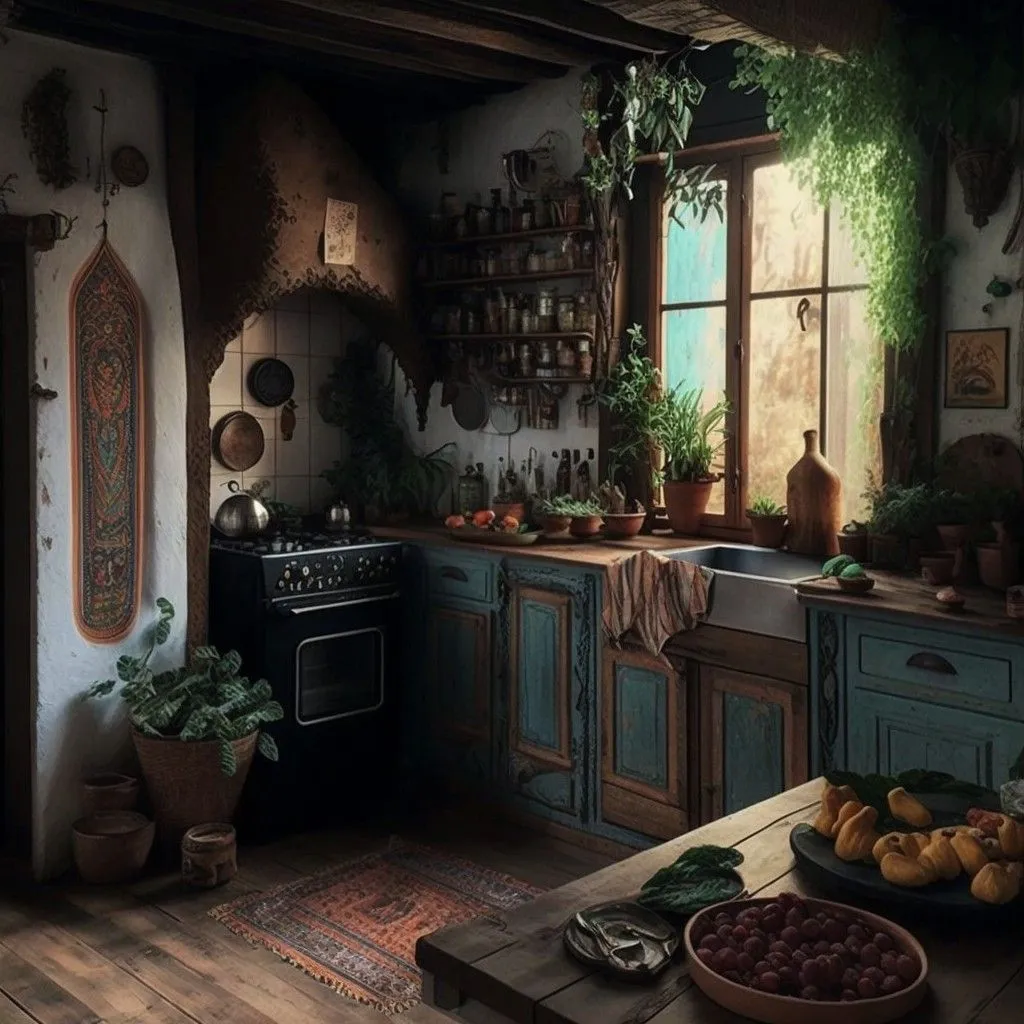Understanding Gothic Kitchen Decor
Gothic kitchen decor brings a unique blend of dark elegance and historical charm into the heart of your home. It’s a style that often evokes images of grand cathedrals, ancient castles, and a touch of mystery. Unlike the bright, airy aesthetics of modern kitchens, gothic design embraces rich colors, ornate details, and a sense of drama. This style is more than just a trend; it’s a statement that reflects a deep appreciation for history, artistry, and a bolder approach to interior design. For those seeking a kitchen that stands out from the ordinary, gothic decor offers a captivating alternative, allowing you to create a space that is both functional and strikingly beautiful. The key is to understand the core elements that define this style and how to incorporate them effectively, creating a cohesive and inviting atmosphere.
The Allure of Gothic Kitchens
The allure of gothic kitchens lies in their ability to create a space that feels both luxurious and intimate. This style is often associated with a sense of history, with the use of materials and design elements that pay homage to the Gothic era. The rich textures, intricate details, and dramatic lighting can transform a kitchen into a truly unique space. Gothic kitchens offer a departure from the minimalist trends, embracing a sense of opulence and personality. They appeal to those who appreciate the beauty of craftsmanship, the allure of darkness, and the comfort of a space that feels both grand and inviting. They stand as a testament to the enduring appeal of gothic design, proving that this style can be both practical and stunning in the modern home. This style is for those who want a kitchen that tells a story.
Key Elements of Gothic Design
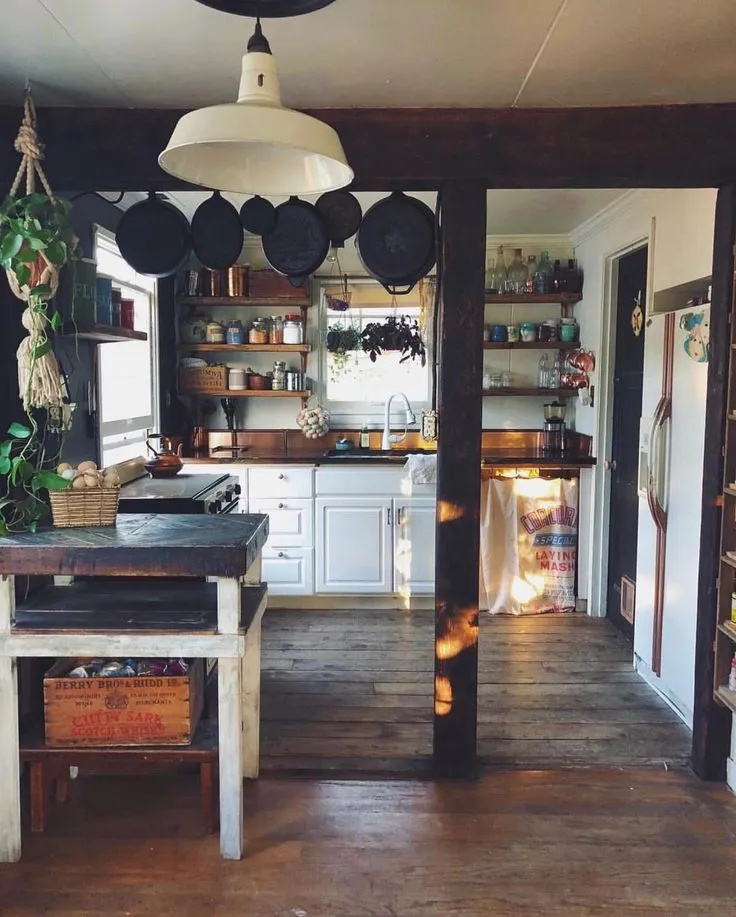
Several key elements define gothic design, which are essential to creating an authentic gothic kitchen. These elements include the use of dark, rich colors, often with deep reds, purples, and blacks dominating the palette. Ornate details, such as arched doorways, pointed windows, and decorative molding, are common features. Heavy, substantial furniture, often made of dark wood, adds to the sense of grandeur. Intricate metalwork, such as wrought iron accents on cabinets or lighting fixtures, is another hallmark. The use of luxurious materials, such as velvet, silk, and leather, enhances the sense of opulence. Lighting plays a crucial role in gothic design, with dim, ambient lighting and the use of candelabras or chandeliers contributing to the dramatic effect. These elements, when combined thoughtfully, create a gothic kitchen that is both captivating and functional, echoing the style’s historical roots.
Color Palette in Gothic Kitchens
The color palette is central to gothic kitchen design, typically featuring a foundation of dark and moody hues. This creates a dramatic and sophisticated atmosphere, which contrasts dramatically with lighter, brighter color schemes. The key is to select colors that evoke a sense of history and depth, creating a space that is both inviting and visually rich. Consider experimenting with a range of dark colors, but it’s essential to balance these choices with careful consideration of the available natural light and the overall size of your kitchen. The use of mirrors can also help to reflect and amplify any available light, preventing the space from feeling overly dark or enclosed. Remember that the goal is to achieve a balance that creates a sense of elegance and comfort.
Dark and Moody Hues
Dark and moody hues are the cornerstone of a gothic kitchen color scheme. Deep shades of black, charcoal gray, and navy blue provide a dramatic backdrop, setting the tone for an atmosphere of mystery and elegance. These colors are not just about darkness; they are about creating depth and richness. Consider incorporating these colors on the walls, cabinets, or even the kitchen island. It’s essential to balance these darker shades with careful lighting and accent colors to prevent the space from feeling too enclosed. By embracing these hues, you can create a gothic kitchen that is both stylish and inviting. Experiment with different shades to find the perfect balance that suits your space and personal style. These deeper colors will create the foundation for the gothic aesthetic.
Accent Colors to Consider
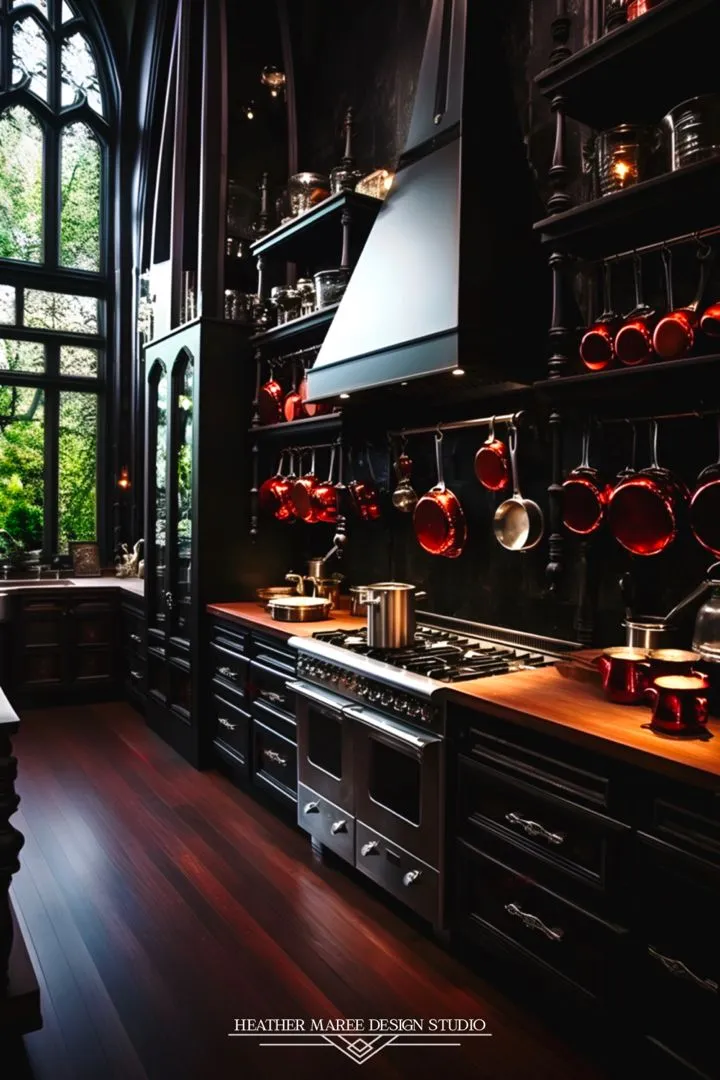
While dark hues form the foundation, accent colors bring vibrancy and personality to a gothic kitchen. Jewel tones like deep ruby, emerald green, and amethyst purple can add richness and contrast, preventing the space from feeling too monochromatic. Metallic accents, such as gold, silver, or bronze, can be incorporated through hardware, fixtures, or decorative accessories, adding a touch of luxury. Soft, muted tones like cream or ivory can also be used to balance the darker shades, providing a visual respite. Consider incorporating these accent colors in your cabinetry, backsplashes, or through decorative items like artwork and textiles. The careful use of accent colors is key to creating a gothic kitchen that is both balanced and visually appealing. This ensures that the kitchen remains inviting and reflects your personal style.
5 Stunning Gothic Kitchen Styles
Gothic kitchen decor offers a versatile style that can be adapted to suit various preferences and architectural settings. From classic interpretations that celebrate traditional elements to modern adaptations that blend historical inspiration with contemporary design, the possibilities are vast. Consider these five unique styles that capture the essence of gothic design. Each style presents a different perspective on how to incorporate gothic elements into your kitchen, allowing you to find the perfect aesthetic to complement your home and personal taste. Explore these options to discover which style best reflects your vision for a stunning and uniquely gothic kitchen space.
Classic Gothic Kitchen
A classic gothic kitchen embraces the traditional elements of the Gothic era, incorporating dark wood cabinetry, ornate detailing, and heavy, imposing fixtures. Think of arched doorways, pointed windows, and intricately carved embellishments. The color palette often features deep reds, blacks, and purples, creating a dramatic and luxurious atmosphere. Furniture and fixtures tend to be substantial, often made of dark, rich woods. Lighting plays a crucial role, with chandeliers and candelabras adding to the ambiance. This style is perfect for those who appreciate historical accuracy and seek to create a kitchen that feels both grand and timeless. The overall effect is one of stately elegance and historical authenticity, creating a space that feels as though it has been lifted from a medieval castle or a grand manor house.
Modern Gothic Kitchen
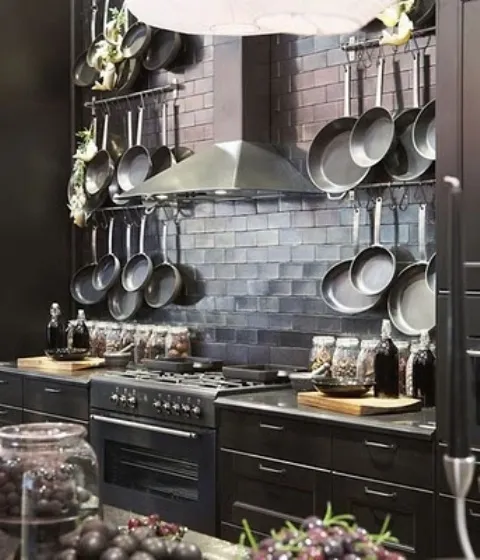
A modern gothic kitchen blends gothic inspiration with contemporary design elements, creating a space that is both stylish and functional. This style often features sleek, minimalist cabinetry in dark hues, paired with gothic accents such as wrought iron hardware, textured backsplashes, and statement lighting. Clean lines and modern appliances are juxtaposed with gothic details, creating a balanced aesthetic. The color palette remains dark but may incorporate lighter accent colors or metallic finishes to add brightness and visual interest. The modern gothic kitchen appeals to those who appreciate the drama of gothic style while maintaining a contemporary feel. This results in a kitchen that is both visually striking and suitable for modern living. This style offers the best of both worlds, providing the elegance of gothic design with the functionality of modern design.
Victorian Gothic Kitchen
The Victorian gothic kitchen draws inspiration from the Victorian era, a period known for its intricate detailing and opulent decor. This style incorporates ornate cabinetry with elaborate carvings, dark wood finishes, and rich, saturated colors such as deep burgundy and forest green. The use of decorative tiles, patterned wallpaper, and elaborate lighting fixtures adds to the sense of luxury. Furniture and fixtures often feature intricate designs, while accessories such as antique mirrors and decorative objects enhance the overall aesthetic. A Victorian gothic kitchen is perfect for those who love historical details and seek a kitchen that is both elegant and richly detailed. It combines the gothic influence with the refined taste of the Victorian era.
Rustic Gothic Kitchen
A rustic gothic kitchen combines the rugged charm of rustic design with the dramatic elements of gothic style. This style often features exposed beams, reclaimed wood cabinets, and stone or brick accents. The color palette may include earthy tones such as browns and grays, accented by darker shades of burgundy or forest green. Wrought iron hardware, antique lighting fixtures, and vintage accessories add to the rustic gothic ambiance. The result is a kitchen that feels both cozy and imposing, perfect for those who appreciate the beauty of natural materials and a touch of gothic elegance. This style emphasizes the raw beauty of natural materials combined with the gothic influence.
Eclectic Gothic Kitchen
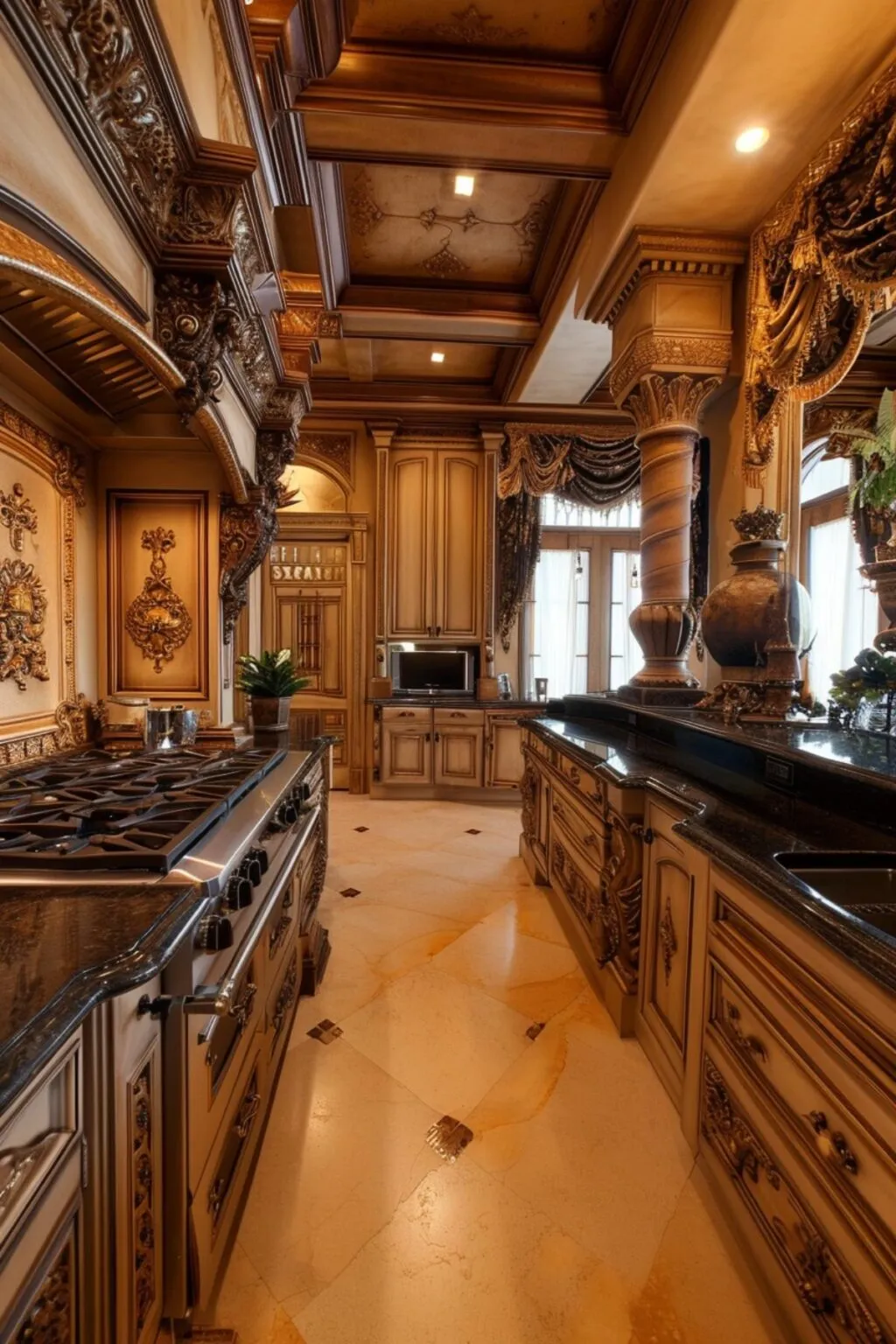
An eclectic gothic kitchen combines gothic elements with a mix of other styles, creating a highly personalized and unique space. This style allows for creative freedom, incorporating elements from various eras and design traditions. It may feature a mix of gothic furniture, modern appliances, and vintage accessories. The color palette can be as diverse as the design, ranging from dark and moody to bright and vibrant. The key is to balance the elements carefully, ensuring that the space feels cohesive and reflects the homeowner’s individual taste. This style is ideal for those who want to experiment with different aesthetics and create a kitchen that is truly their own. This is where you can let your personality shine through.
Essential Gothic Kitchen Decor Elements
To successfully create a gothic kitchen, certain essential elements are necessary. These elements work together to establish the characteristic atmosphere. Focusing on these key features will help you achieve an authentic and captivating gothic aesthetic. From selecting the right furniture to incorporating the perfect decorative accents, the following elements are fundamental to transforming your kitchen into a gothic masterpiece. Understanding and implementing these elements will ensure a cohesive and visually stunning gothic kitchen that reflects the style’s historical roots and dramatic appeal. It is these details that bring the whole style together.
Furniture and Fixtures
Furniture and fixtures in a gothic kitchen should be substantial and often crafted from dark wood, such as mahogany or walnut. Look for pieces with intricate carvings, arched details, and heavy, imposing forms. Kitchen islands and cabinets with ornate detailing are ideal, as are dining tables with robust legs and chairs with high backs. Wrought iron fixtures, such as pot racks and range hoods, add to the overall gothic feel. The furniture and fixtures should not only be functional but also reflect the aesthetic of the era. These elements are crucial for establishing the gothic style. It should contribute to the atmosphere, creating an environment that is both functional and aesthetically pleasing.
Lighting Fixtures
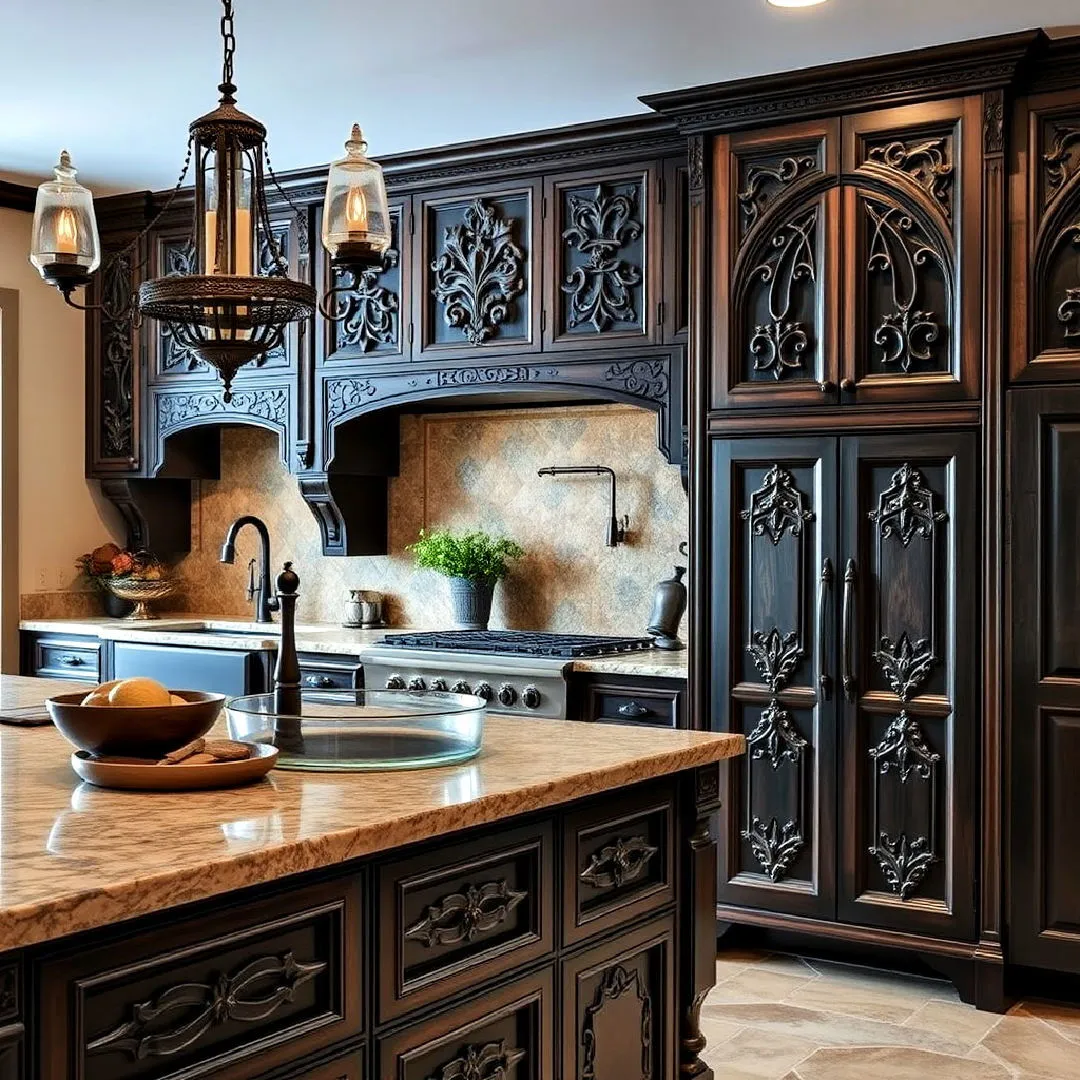
Lighting plays a crucial role in gothic kitchen design, with a focus on creating a dramatic and atmospheric environment. Chandeliers with wrought iron or crystal details are a classic choice, as are pendant lights with intricate designs. Candelabras and sconces add an element of mystery and intimacy, perfect for creating a dim, ambient glow. Consider using dimmers to control the intensity of the lighting, allowing you to adjust the atmosphere as needed. The key is to choose fixtures that complement the overall design while providing sufficient illumination for kitchen tasks. The right lighting can enhance the gothic elements, creating an environment that is both functional and atmospherically rich. It allows you to set the perfect mood for any occasion.
Decorative Accents
Decorative accents are essential for adding personality and finishing touches to a gothic kitchen. Incorporate antique mirrors in ornate frames to reflect light and add depth. Display vintage or antique kitchenware, such as pewter plates and goblets, to enhance the historical feel. Add gothic-inspired artwork, such as portraits or landscapes, to the walls. Use textiles with rich textures, such as velvet or damask, for curtains or table linens. These accents not only add visual interest but also contribute to the overall atmosphere of the space. The careful selection and placement of these decorative elements will help you create a cohesive and captivating gothic kitchen. These details will help to tell the story.
Materials and Textures
The use of specific materials and textures is central to creating an authentic gothic kitchen. Dark wood, such as mahogany or walnut, should be a primary material for cabinets and furniture. Stone or brick can be incorporated into backsplashes or accent walls, adding a touch of rustic charm. Wrought iron is another important element, used for hardware, fixtures, and decorative accents. Textiles, such as velvet, damask, and leather, can be used for upholstery and window treatments, adding to the sense of luxury. The combination of these materials and textures will create a rich, layered aesthetic, essential for achieving the gothic look. The textures add depth to the decor. The materials work together to create a cohesive and immersive environment.
Incorporating Gothic Elements Safely
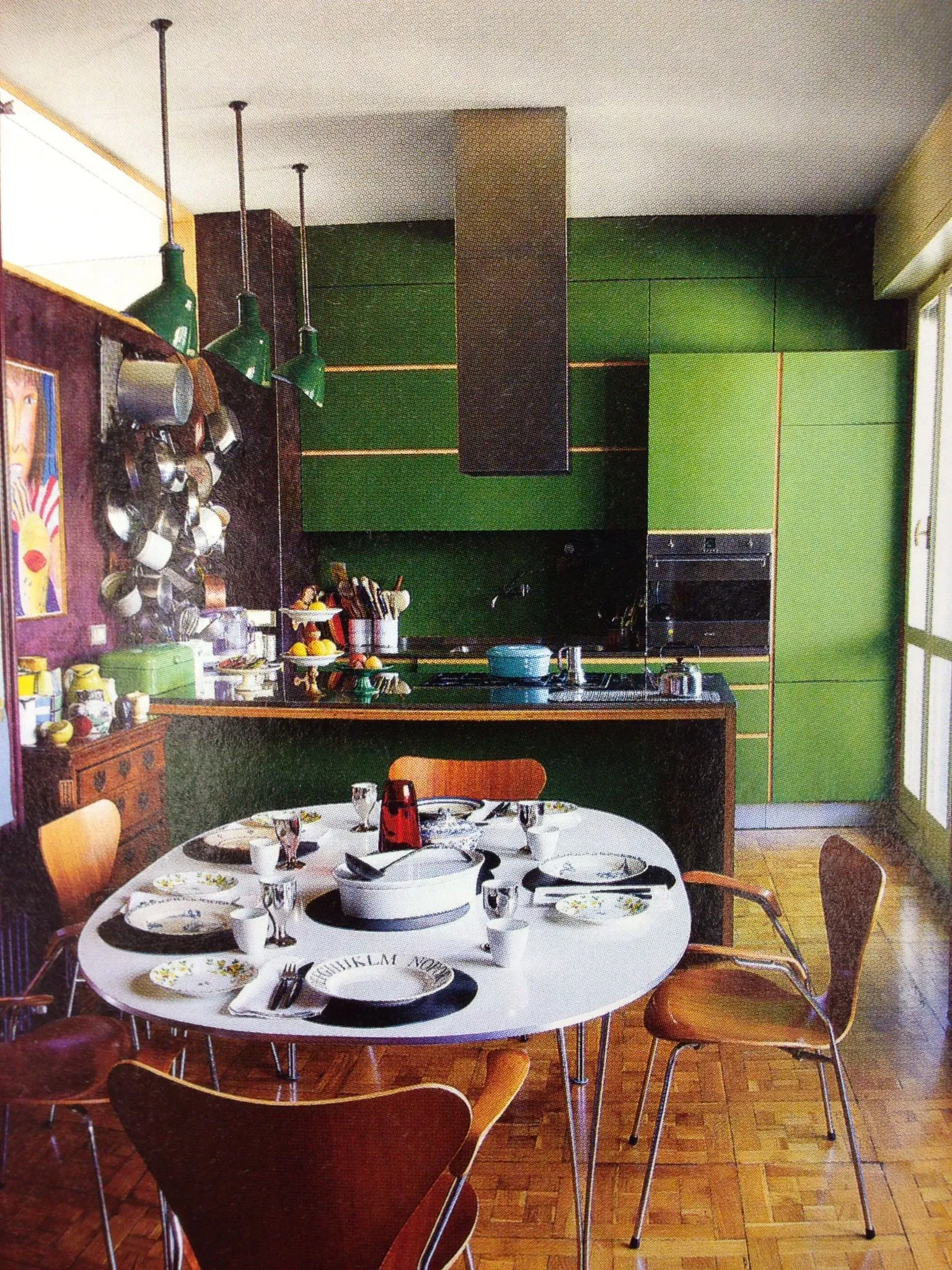
While the gothic style is undoubtedly captivating, it’s essential to incorporate its elements safely and practically in your kitchen. Consider fire safety when using candles and candelabras, ensuring they are placed away from flammable materials and never left unattended. Good ventilation is vital, especially if you’re using dark colors and heavy textures, to prevent the space from feeling claustrophobic. Ensure that the lighting is adequate for kitchen tasks, even if you’re aiming for a dramatic atmosphere. Balance the dark hues with lighter accents and natural light to avoid making the space feel overly enclosed. Always prioritize functionality and safety while designing your gothic kitchen to create a space that is both beautiful and practical.
Conclusion
Gothic kitchen decor offers a unique and captivating way to transform your kitchen into a space that is both elegant and expressive. By understanding the key elements of gothic design, choosing the right color palette, and incorporating the various styles, you can create a kitchen that reflects your personal taste and celebrates the beauty of history. Remember to balance the dramatic elements with practical considerations, ensuring that your gothic kitchen is both beautiful and functional. Whether you opt for a classic, modern, or eclectic interpretation, a gothic kitchen is sure to be a striking and inspiring space. Embrace the darkness, the drama, and the details, and create a kitchen that will be the heart of your home. This design will certainly be memorable.
